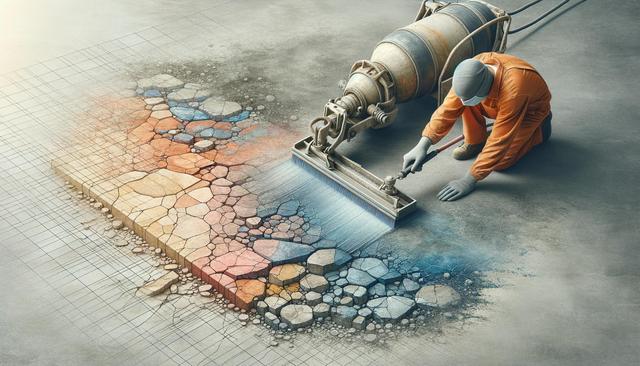Understanding Concrete Resurfacing
Concrete resurfacing is a method used to restore the appearance and functionality of old or damaged concrete surfaces. Instead of tearing out and replacing the existing slab, a thin layer of specialized material is applied over the top. This process is not only more cost-effective but also less time-consuming. It’s commonly used for driveways, patios, sidewalks, and even commercial flooring. The resurfacing compound can be customized with colors, textures, and patterns, allowing for creative finishes that enhance curb appeal and usability.
One of the key benefits of resurfacing is that it addresses surface-level damage like minor cracks, discoloration, and rough textures. However, it’s important to note that resurfacing is most effective when the underlying concrete is structurally sound. Before starting the process, a thorough inspection should be conducted to assess the condition of the base slab. If there are major structural issues like deep cracks or sinking, those may require more extensive repairs before resurfacing can be considered.
When to Consider Concrete Resurfacing
There are several signs that indicate it might be time to consider resurfacing your concrete. These include visible wear, faded color, and surface imperfections that detract from the appearance or functionality of the area. Resurfacing is a popular choice for homeowners and businesses alike because it offers a relatively quick turnaround and can significantly improve the look of a space.
Some common scenarios where resurfacing is suitable include:
- Driveways with light cracking or surface stains
- Garage floors with worn finishes
- Pool decks that have become rough or unsightly
- Patios in need of a visual upgrade
Additionally, resurfacing can be used to add slip-resistant finishes, making it a good option for areas that need improved safety, such as walkways and pool surrounds.
Materials and Techniques Used
The success of a concrete resurfacing project largely depends on the materials used and the techniques applied. Most resurfacing compounds consist of a blend of Portland cement, sand, polymer modifiers, and other additives that enhance bonding and durability. These mixtures form a strong bond with the existing concrete and are designed to withstand foot traffic, vehicle loads, and weather conditions.
Application techniques can vary based on the desired finish. For example:
- Squeegee or trowel application for smooth surfaces
- Spray-down methods for textured finishes
- Stenciling or stamping for decorative patterns
Surface preparation is also critical. The area must be clean, free of debris, and properly etched to ensure good adhesion. Skipping this step can lead to premature failure of the resurfacing layer.
Cost and Time Considerations
Compared to full replacement, concrete resurfacing is generally a more affordable option. Costs can vary based on the size of the area, the complexity of the chosen design, and the condition of the existing surface. On average, resurfacing can cost a fraction of what it would take to remove and pour new concrete, making it an appealing choice for budget-conscious property owners.
Time is another factor where resurfacing shines. Most projects can be completed within a few days, depending on weather conditions and curing times. This minimizes disruption to everyday activities, especially in high-use areas like driveways or commercial entryways. Quick-drying mixtures are available and can reduce downtime even further.
Despite the lower cost and faster turnaround, it’s important not to cut corners. Hiring experienced professionals and using high-quality materials will ensure the resurfaced area remains durable and attractive for years to come.
Maintenance and Longevity
Once resurfaced, concrete surfaces are relatively easy to maintain. Regular cleaning with mild detergents and occasional resealing can help extend the life of the finish. It’s also a good idea to avoid using de-icing salts in winter, as these can cause surface damage over time.
With proper care, a resurfaced concrete surface can last 8 to 15 years or more, depending on usage and environmental factors. Some tips to keep your resurfaced area in top condition include:
- Promptly clean oil or chemical spills
- Use protective mats under heavy furniture or planters
- Apply a sealer every 2–3 years to maintain the finish
By following these simple steps, you can ensure that your resurfaced concrete stays looking fresh and functional for the long term.




Leave a Reply